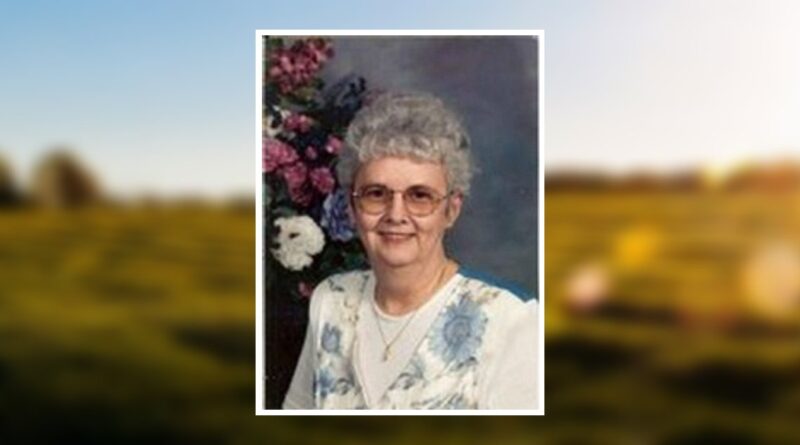Betty Jane McClellan Killed When Home Invaded in Waynesburg Pennsylvania
On the evening of March 22, 2009, the quiet rural community of Sycamore—just outside Waynesburg in Greene County, Pennsylvania—was shattered by a violent home‐invasion robbery that left 72-year-old Betty Jane McClellan dead and her husband, Jacob “Jake” McClellan, gravely wounded. What began as a routine night took a horrifying turn when an unknown assailant forced his way into their single-wide trailer, demanded “guns and money,” and unleashed a deadly barrage of gunfire. More than a decade later, the circumstances of Betty Jane’s murder remain as perplexing as ever, with no arrests and an array of unanswered questions.
Betty Jane McClellan: Early Life and Community Role
Betty Jane Amos McClellan was born on June 23, 1938, in West Finley Township, Washington County, Pennsylvania. A graduate of Claysville High School, she had spent over four decades living in Greene County, first in Morris Township before moving to the more isolated Sycamore area in the mid-1970s. Renowned locally for her warmth and generosity, Betty Jane was deeply involved in her church, Enon Baptist, where she served as a deaconess, Sunday-school teacher, and choir member. She also coordinated Vacation Bible School programs and wrote the church newsletter. Beyond her faith community, she managed the family’s scrap-metal and junk-deal business alongside her husband, Jake, whom she married on April 15, 2001. Together they led a modest but comfortable life, dealing primarily in cash transactions—a fact that would later draw suspicion in the investigation of her death.
Life in Rural Greene County
The McClellans’ trailer sat on a quiet stretch of Stringtown Road, marked by dense woods and winding backroads. Sycamore was a close-knit enclave where neighbors looked out for one another—children played freely outdoors, and local road crews knew every household. Despite the isolation, crime was rare; violent incidents were almost unheard of in Greene County, which prided itself on low crime rates and strong community ties. The McClellans were embraced by their neighbors, who respected Betty Jane for her active church ministry and hospitable nature. She often hosted potluck dinners, helped deliver meals to shut-ins, and was known for her homemade quilts and baked goods.
The Night of March 22, 2009
On that fateful Sunday night, Betty Jane and Jake had finished their evening chores—locking the trailer door, setting aside the day’s receipts, and preparing for bed around 9:00 p.m. Jake recalled that his wife complained of a mild headache and suggested they retire early. Moments later, a knock sounded at the front door. When Jake peered through the peephole, he saw a white male in his 40s holding his head as if injured and claiming he had a flat tire. Trusting the distressed appearance, Jake opened the door. The visitor immediately forced his way inside, brandishing a small-caliber handgun and barking demands for “guns and money.”
The Discovery and Emergency Response
Chaos erupted instantly. Jake—unprepared and unarmed—tried to step back, but the intruder shoved him against the wall, pistol whipping him before shooting twice in the face and neck. Bleeding and dazed, Jake stumbled out of the trailer, fleeing into the night among parked cars and stacked scrap metal. He found shelter behind a pile of old radiators, where he pressed desperately on his neck to staunch the bleeding. Minutes later, he flagged down a passing motorist, who drove him to a nearby farmhouse to call 911. Meanwhile, another gunshot echoed inside the trailer’s back bedroom. Responding officers and paramedics forced their way in and discovered Betty Jane unresponsive on her bed, a single fatal wound in her chest. Efforts to revive her proved futile; she was pronounced dead at the scene.
Law Enforcement Investigation
The Greene County Sheriff’s Office, aided by Pennsylvania State Police detectives, arrived within minutes of the emergency call. They secured the trailer, taped off the crime scene, and began canvassing neighbors for witnesses. Initial observations included:
- The front door showing signs of forced entry but no pry-marks, suggesting the lock was disengaged from the inside or the intruder had a key.
- A sturdy metal lockbox, reportedly containing up to $10,000 in cash from the day’s scrap-metal sales, missing from its usual place beside the bed.
- No firearms or other valuables removed, despite explicit gun threats.
- Signs that the assailant had moved swiftly, conducting the robbery in under two minutes before fleeing in a white, 1980s-model full-size van seen idling on the gravel driveway.
Crime-scene technicians collected ballistic samples, lifted latent fingerprints, and recovered a spent shell casing. They tracked Jake’s path and interviewed every passing motorist, but no clear lead emerged.
Suspect Description and Leads
Witnesses and Jake himself provided a composite of the suspect:
- Race & Gender: White male.
- Age: Approximately mid-40s.
- Height & Build: 5′7″ to 5′8″, 150–170 pounds.
- Hair: Shoulder-length brown hair, unshaven, possibly wearing a toupee.
- Clothing: Camouflage jacket and pants.
- Vehicle: White full-size van, older 1980s model, no side windows on the cargo area.
The dramatic nature of the assault, combined with the assailant’s apparent familiarity with firearms and willingness to confront two occupants, led investigators to consider a professional criminal or someone with prior weapons training. Yet the camouflage attire and van suggested a deliberate attempt at blending in with rural surroundings.
Motive, Theories, and Suspicions
Several theories surfaced as the probe deepened:
- Robbery Gone Wrong: The intruder intended only to steal cash, panicking when confronted and resorting to violence. Yet the absence of firearms taken and the assailant’s precision shots at two targets cast doubt on a simple robbery motive.
- Insurance Payout: Jake collected a life insurance policy worth over $100,000. His quick remarriage and calm demeanor during the funeral raised eyebrows among some family members and neighbors. Still, authorities found no direct evidence of collusion or financial motive beyond speculation.
- Personal Vendetta: The McClellans’ scrap business occasionally clashed with competitors over buying territory. A disgruntled ex-employee or rival dealer may have sought revenge, using the camouflage outfit as a false flag.
- Pattern Crimes: Fifteen miles away in November 2008, 81-year-old Nobel Wine—also a cash-only scrap collector—was murdered in his home, shot twice in the head, and his trailer burned in an arson designed to destroy evidence. Although similarities existed, connections between the two killings could not be conclusively established.
Related Incidents and Patterns
The region’s sparse population and heavy reliance on cash transactions attracted both itinerant and opportunistic criminals. In the months before March 2009, local deputies noted a spike in home-invasion reports from families involved in scrap metal or agricultural work. Yet none matched the lethal combination of firearms use, disguise, and rapid escape seen in the McClellan case. Investigators established a task force to cross-reference ballistic evidence, but the sole shell casing failed to yield a definitive match in state or federal databases.
Impact on the Community and Family
Betty Jane’s murder stunned Sycamore and surrounding towns. Her funeral drew hundreds of mourners—church members, neighbors, and even former scrap-metal clients—who remembered her as a beacon of kindness. Local schools closed early, and community vigils were held for weeks. Jake, though recovering from his injuries, withdrew from public life, selling the scrap business and relocating temporarily. His daughters—Shelly, Sherry, and Lisa—struggled with grief, urging persistence in the search for answers. Church groups formed prayer chains and erected memorial quilts, ensuring Betty Jane’s service to others would not be forgotten.
Cold Case Status and Ongoing Efforts
By 2010, the McClellan murder was officially designated a cold case. Nevertheless:
- Periodic Reviews: Greene County detectives revisit the file annually, testing any new tip with modern forensic tools. Ballistics evidence is re-examined with updated databases and 3D imaging.
- Reward Fund: A private fund established by Betty Jane’s family continues to offer up to $25,000 for information leading to an arrest.
- DNA Advances: Any biological material collected at the scene is preserved for possible future analysis using genetic genealogy, should composite profiles emerge.
- Public Appeals: Television segments and true-crime podcasts keep the case in the public eye, encouraging anyone with second-hand knowledge—perhaps a boastful confession or a furtive remark—to come forward.
Despite these measures, no credible breakthrough has materialized. The van’s license plate, thought to be partially visible to a neighbor, yielded no DMV matches. No fingerprints matched known offenders. And the camouflage jacket and shell casing remain unlinked.
Conclusion
More than a decade after Betty Jane McClellan was cruelly gunned down in her own home, the pain of her loss lingers in Greene County. A devoted church leader, beloved scrap-metal entrepreneur, and doting wife, she was felled not by chance but by a ruthless intruder who vanished as quickly as he appeared. Her murder stands as a stark reminder that even the most tranquil communities can harbor hidden dangers—and that justice can sometimes evade even the most determined pursuit. Yet the memory of Betty Jane’s kindness endures, inspiring ongoing efforts to unearth the truth and bring her killer to account.
Discover more from City Towner
Subscribe to get the latest posts sent to your email.




